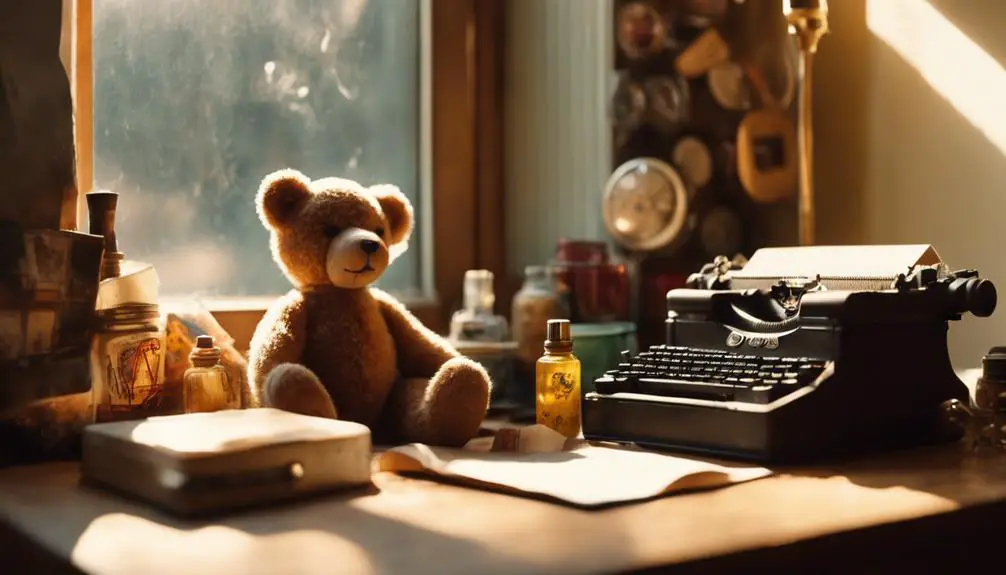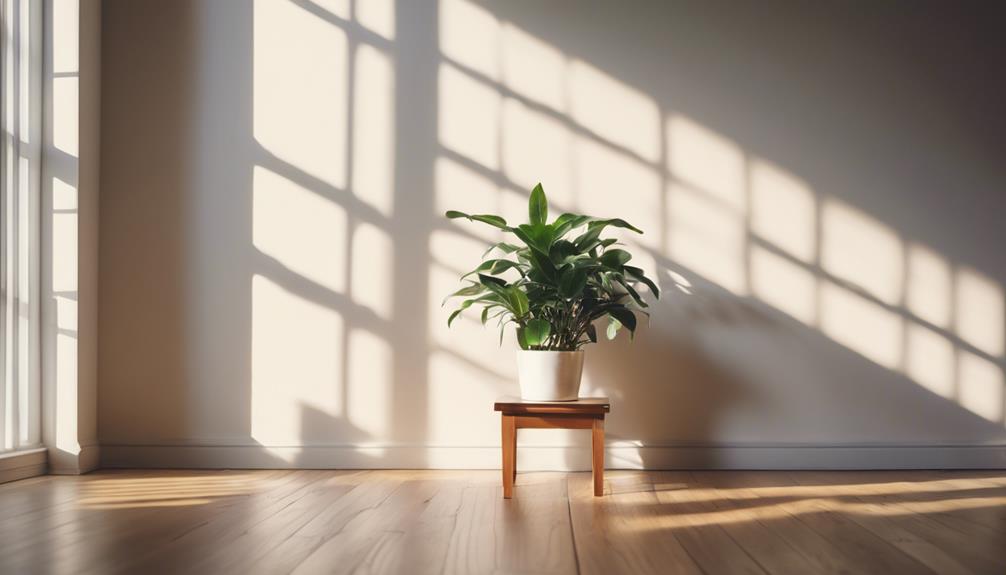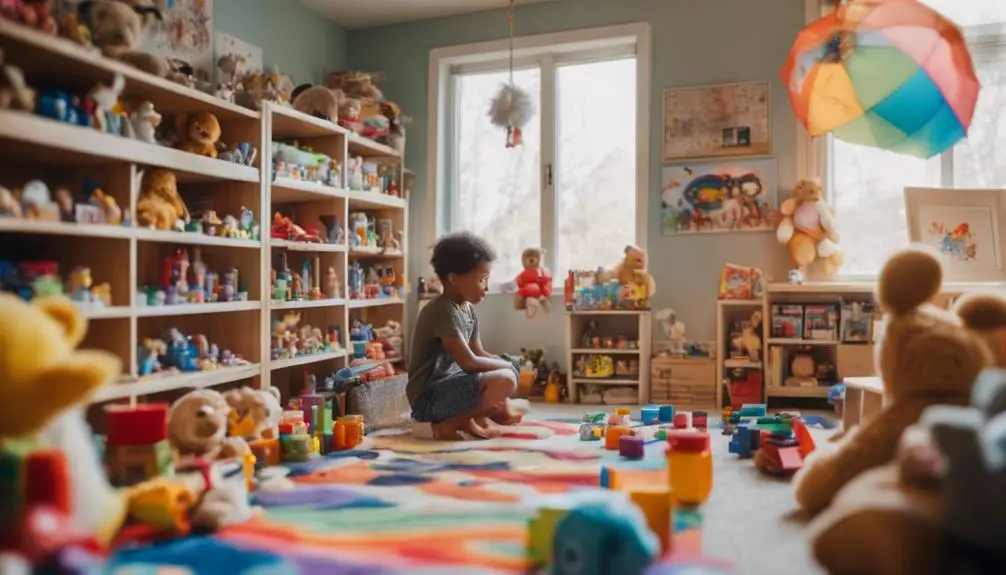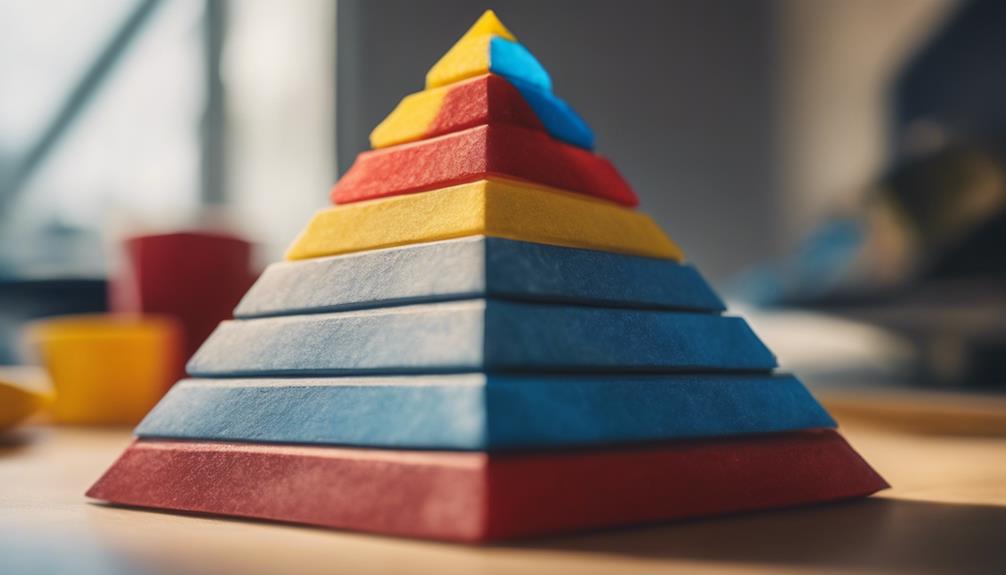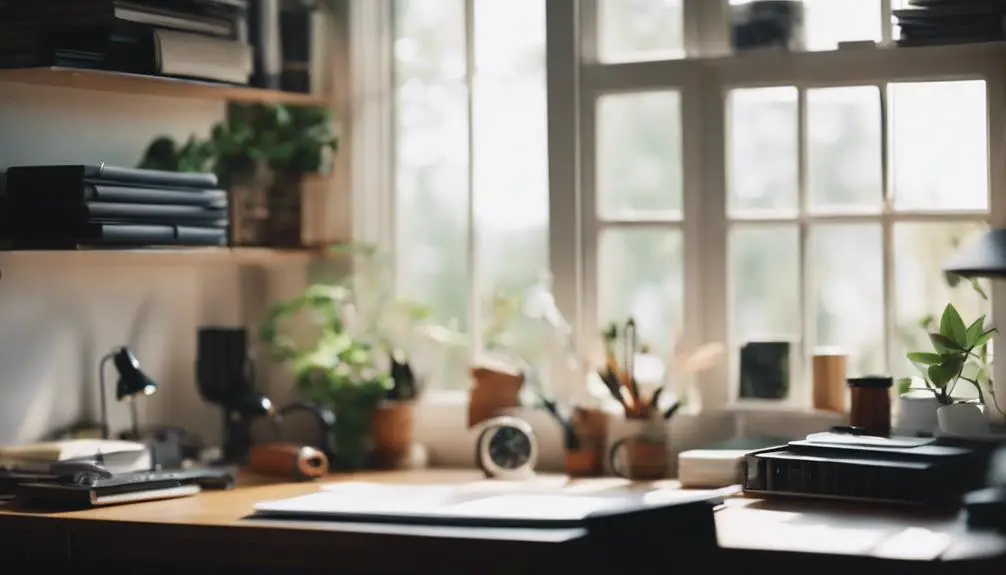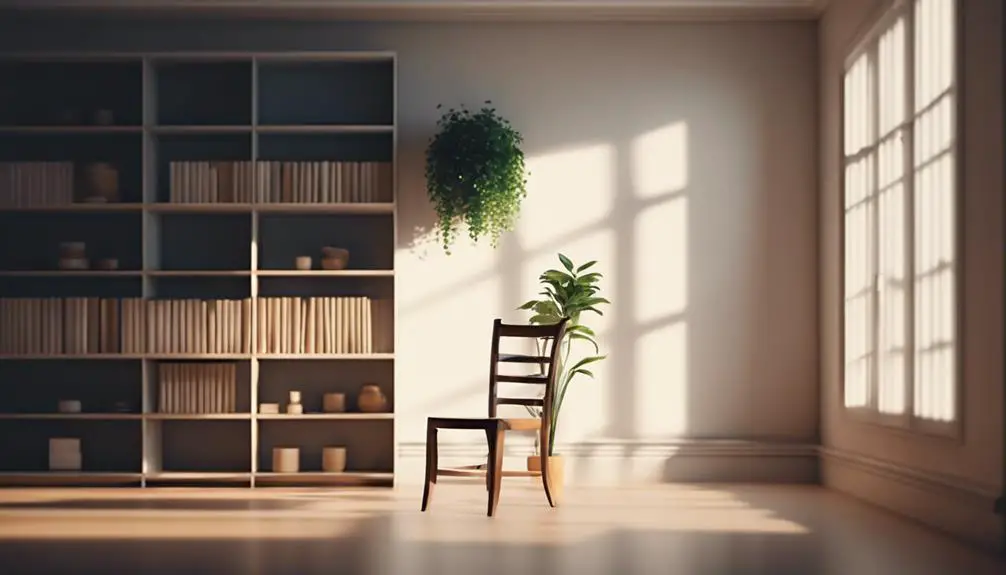Certain objects can deeply affect your emotions, often serving as symbols of your past experiences, relationships, or significant moments that contribute to your identity. Their physical presence alone is not the sole reason for this emotional connection; rather, the memories and feelings they evoke play a crucial role.
These attachments can offer a sense of comfort and familiarity, which makes it difficult to consider parting with them. As you explore this emotional landscape, you will discover various psychological and emotional factors at play. This journey may lead to a deeper understanding of how you view your possessions and, in turn, yourself.
When you begin to assess the true importance of these items, you may find new perspectives that influence your overall sense of self.
For instance, a childhood toy may remind you of simpler times, providing warmth in moments of stress. In contrast, a piece of furniture passed down from a loved one could represent connection and continuity in your life.
Recognizing the stories behind these objects can help you appreciate their significance while also allowing you to reconsider their place in your life. Such reflections can encourage personal growth and a more nuanced understanding of attachment.
Understanding Emotional Attachment
Emotional attachment often reveals itself in three primary ways: connection, comfort, and identity. The objects you own can symbolize profound meanings, influencing your personal story and mirroring your unique experiences. Consider how your cherished items contribute to your material culture; they narrate tales that resonate with your journey.
Attachment theory posits that these bonds stem from psychological ownership, a feeling of belonging to your possessions. This ownership enhances your emotional resilience, as these items offer solace during tough times. The tactile experiences of your belongings—how they feel in your hands and their visual appeal—can amplify your bond with them, creating a deeper connection.
Your buying choices reflect how you assert your identity through these attachments. Each item you acquire is more than just a transaction; it embodies an aspect of who you are. It’s not solely about aesthetic appreciation; it’s also about the significance you attach to these objects. Recognizing emotional attachment allows you to embrace your desire for autonomy while acknowledging the substantial impact your possessions have on shaping your identity.
Ultimately, it’s crucial to strike a balance between attachment and freedom, enabling you to navigate your life with purpose. For example, consider a well-loved book that has accompanied you through various phases of your life. Its pages may be dog-eared, and its cover worn, but it holds memories and lessons that are invaluable.
This book isn’t just a collection of words; it’s a tangible piece of your journey, reflecting your growth and experiences. Choosing such items intentionally fosters a connection that enriches your identity, making it essential to understand the emotional significance of what you own.
The Psychology of Possessions
When considering your belongings, it’s clear that they carry significant emotional weight. Each item often embodies memories and connections that contribute to your sense of self. Grasping this psychological aspect can illuminate why some objects feel impossible to replace.
For instance, a childhood toy may remind you of carefree days spent with family, while a piece of jewelry passed down from a grandparent may symbolize love and heritage. These connections to your possessions aren’t merely sentimental; they help form your identity and influence how you see yourself in the world.
Recognizing the attachments you have to certain items can lead to a deeper understanding of your emotional landscape. This awareness might even assist you in making decisions about what to keep or let go of, as you can better appreciate the true significance of each piece in your life.
Emotional Connection to Objects
Many individuals develop strong emotional ties to their belongings, often perceiving these items as parts of their identity. This connection aligns with attachment theory, which suggests that your attachment styles shape how you value objects. Each possession transforms into a symbol, infused with meaning that reflects your personal journey.
Your belongings transcend mere material items; they evoke emotions and sensory experiences linked to specific memories. For example, an old, well-loved book may bring back fond memories of leisurely afternoons spent immersed in its pages. This emotional bond fosters a sense of object permanence, where the familiarity of your possessions provides comfort and stability.
As you move through life, these attachments influence your perception of value. You might hold a seemingly insignificant trinket dear because it encapsulates a cherished experience, while someone else may view it as mere clutter. Grasping the significance of this emotional connection can free you from excessive attachment, allowing you to appreciate your items without feeling confined by them.
Ultimately, understanding the psychology behind your attachments can encourage a sense of liberation, fostering a healthier relationship with the belongings you treasure.
For instance, consider a piece of jewelry passed down through generations. It not only serves as an accessory but also carries the legacy of family stories and memories, enriching your connection to it. Embracing such significance can change how you view your possessions, shifting your focus from ownership to appreciation.
Sentimental Value and Memory
Sentimental value serves as a vital link between our past experiences and the present, imbuing everyday items with deep significance. When you hold an heirloom or a cherished object, a strong emotional connection often emerges, as if the memories associated with that item are intricately woven into its essence. This connection is reinforced by the concept of object permanence, which helps individuals maintain ties to moments that may have faded from their current awareness.
The bond with these items often originates from attachment theory, which explains how emotional connections develop through shared experiences. The sensation of touching a familiar object can trigger vivid recollections; this is known as tactile memory. Items can evoke material nostalgia, reminding you of treasured times, while specific triggers can bring to mind loved ones and collective experiences.
Each item represents a fragment of your emotional legacy, making it challenging to part with them. The appeal of these possessions lies not only in their physical form but also in the intricate web of memories and emotions they encapsulate. They anchor you in a world that seeks liberation, yet frequently finds itself rooted in the past.
For example, a vintage photograph can evoke a wealth of memories from family gatherings, while a piece of jewelry passed down through generations can symbolize love and connection that transcends time.
Identity and Personal Belongings
Reflecting on your personal belongings reveals a lot about your identity and how you see yourself. Each item you possess acts as a canvas for your identity, showcasing your values, interests, and the experiences that shape who you are. For instance, a vintage jacket might highlight your appreciation for retro fashion, while a favorite book could represent your thirst for knowledge. These possessions aren’t just items; they reflect your unique personality.
Your belongings often carry significant meanings, symbolizing milestones or cherished memories that define your journey. As you look around your space, you might notice certain items that bring you joy or evoke feelings of freedom, reminding you of the life you aspire to live.
As you consider your world, think about how these objects affect your self-image. Do they inspire and uplift you, or do they feel like burdens? The ability to choose what to keep and what to let go of can lead to a more defined sense of self.
When you remove items that no longer resonate with you, you make room for those that truly reflect who you are. Ultimately, your possessions can become more than just objects; they can embody the essence of who you are and who you wish to become.
Sentimental Value Explained
When you keep an object, it often holds emotional significance that transcends its mere physical form. These belongings can trigger memories and connections linked to important events in your life, influenced by both your individual experiences and broader cultural backgrounds.
Understanding your attachment to certain items can provide insight into your values and relationships.
For instance, consider a childhood toy. This simple object might remind you of carefree days and the love of family and friends. Its sentimental weight may stem from the joy it brought you or the comfort it provided during tough times.
Recognizing these feelings can help you appreciate the role such items play in shaping your identity and reinforcing your connections to others.
This exploration of sentimental value is essential, as it highlights how objects can serve as vessels of meaning. They can connect us to our past and remind us of the important relationships in our lives.
Embracing this understanding allows us to cherish these items while also reflecting on the experiences that have shaped who we’re today.
Emotional Connections to Objects
Objects often represent more than just their physical form; they encapsulate memories and emotions that integrate into our life experiences. You may feel a strong attachment to certain items because they signify important events or relationships, demonstrating the concept of object symbolism. This emotional bond can be understood through attachment theory, which explains how your ways of relating to others shape your feelings towards material possessions.
When you own an item that holds personal meaning, it tends to feel like a part of you, creating a sense of psychological ownership. These emotionally significant belongings transform into concrete memories, serving as reminders of treasured moments and individuals. You might observe how specific objects stir emotions that connect you to your past, highlighting the notion of object permanence in an ever-changing world.
Your purchasing habits are influenced by this emotional connection, as you may seek out items that resonate with your life experiences. Recognizing these ties can clarify why you form attachments to objects with such ease. Acknowledging the significance of these connections can enhance your appreciation for the memories they embody.
For instance, a childhood toy might remind you of carefree days or a family heirloom could evoke feelings of love and continuity. Embracing these relationships with your belongings fosters a deeper understanding of their emotional weight in your life.
Memories and Associations
Many individuals cling to objects that evoke memories and associations, granting them a sentimental significance that surpasses their mere physical form. This emotional attachment often mirrors complex psychological theories, such as attachment theory, illustrating how connections with personal belongings can bolster emotional resilience.
Each item serves as a symbol, acting as a trigger for nostalgia that brings forth vivid sensory experiences and feelings tied to the past. The capacity to recall these experiences relates to the process of memory encoding, where particular objects become linked to important life events.
For example, a childhood toy may conjure feelings of carefree days, highlighting the notion of object permanence—the understanding that these memories endure even when the moments feel far away. This relationship between material culture and attachment styles influences how you perceive and engage with your environment.
Holding onto these objects means you aren’t merely preserving physical items; you’re valuing the emotions and narratives they represent. Embracing the memories they evoke allows you to weave together a rich tapestry of experiences that enhance your life.
This process offers a sense of liberation from the past while guiding your current journey.
Cultural and Personal Influences
Across different cultures and personal experiences, the sentimental worth of objects can vary significantly. This variation is influenced by societal standards, traditions, and individual stories. Your connection to certain items often mirrors your cultural background and personal journey. In a society where material possessions carry strong emotional significance, you may discover that specific objects resonate with you deeply, tied to family ties or crucial life milestones.
The social context you inhabit shapes your emotions towards these items. For some individuals, an heirloom may signify a long-standing heritage, while for others, it might simply be an old decoration with little meaning. Your styles of attachment also contribute to these feelings; if you have enjoyed supportive relationships, you might form a stronger connection with items that evoke those memories.
Cultural heritage plays a vital role in how you assess the importance of objects. Different cultures assign varying degrees of value to comparable items. As you navigate your surroundings, recognize that these attachments are more than just personal traits; they’re reflections of wider cultural influences.
Understanding this complexity can enhance your appreciation for why certain objects trigger such intense emotions in your life, providing valuable insights into your journey towards emotional liberation.
Childhood Experiences and Objects
During your childhood, you likely developed connections to various objects that held special significance in your life. These connections often arise from nostalgic memories, with early experiences linked to specific items. Each object carries its unique meaning, influencing how you relate to them over time.
| Object Type | Emotional Connection |
|---|---|
| Family Heirlooms | Physical reminders of your lineage |
| Playtime Belongings | Sources of happiness and freedom |
| Childhood Keepsakes | Representations of emotional safety |
Reflecting on these formative experiences reveals how these items provided comfort and a sense of stability. A well-loved teddy bear or a cherished book became integral to your sense of self. They evoke memories of carefree days filled with joy and creativity.
As you move through adulthood, these childhood treasures may still trigger strong emotions, reminding you of more straightforward times. It is common to hold onto these objects, as they symbolize not only memories but also the core of who you have become. Embracing these attachments can be a way to honor your past and appreciate the journey that has shaped your present.
For instance, if you still have your favorite childhood book, consider how it influenced your love for reading. Or think about a family heirloom that connects you to generations before you, enriching your understanding of your roots. Each item carries a story, reflecting the richness of your life experiences.
The Role of Memory
Memories hold significant importance in the way you form connections with items from your childhood. These beloved objects act as memory triggers, igniting feelings of nostalgia that whisk you back to more carefree days. Each item possesses its unique meaning, intertwining your past experiences into a rich tapestry.
Through cycles of attachment, you may feel compelled to keep these objects close as a means of preserving your memories and maintaining those emotions. As you engage with these items, they evoke strong feelings, reminding you of your earlier self and the distance you have traveled since then.
Associative memories create a network of links that tie specific objects to crucial moments in your life, deepening your connection to them and making it challenging to part with them. The process of memory consolidation enhances these bonds, solidifying the stories that accompany each object.
The narratives you build around them—known as object stories—offer a sense of identity and continuity. In an often chaotic world, these items serve as anchors, helping you embrace your past while also allowing you to seek freedom in the present.
Understanding the significance of memory enriches your appreciation of these attachments and the journey they symbolize.
Cultural Influences on Attachment
Cultural influences significantly shape the way you form attachments to objects, guiding your perceptions and emotional connections. Your cultural background plays a crucial role in this process, establishing the values you hold dear.
Attachment theory suggests that your relationships with objects can mirror deeper emotional bonds, often rooted in societal norms and material culture.
Consider the items in your life that hold ritual significance. These objects often connect you to shared experiences and embody traditions that resonate with your identity. They act as symbols of your culture, linking you to a collective memory that reinforces your sense of belonging.
Embracing these influences allows you to experience freedom in the connections you create. Each attachment serves as a thread in the rich tapestry of your life, intertwining your past, present, and future.
Recognizing how your culture impacts your attachments enables you to appreciate the emotional depth they provide. It’s not merely about the object itself; it’s about the stories and meanings that shape your existence, fostering a profound connection that transcends mere possession.
For example, an heirloom passed down through generations may evoke memories of family gatherings, symbolizing love and continuity. A traditional musical instrument could represent cultural heritage, serving as a reminder of the music that connects you to your roots.
These attachments enrich your life by providing a sense of identity and belonging, illustrating the importance of cultural influences on the emotional bonds you form with objects.
Fear of Letting Go
Parting with an old item can be challenging due to the memories it holds. The emotional weight attached to such objects can feel overwhelming, as if letting go means losing a fragment of your history. Recognizing the sentimental value you assign to these items is essential in addressing this fear. It allows you to reflect on what truly holds significance in your life.
For instance, consider a worn-out teddy bear from childhood. Its frayed edges and faded fabric tell stories of comfort and companionship during tough times. Instead of viewing it merely as a toy, think of it as a symbol of the love and safety you experienced. This perspective can help you determine if it deserves a place in your life or if it’s time to create space for new memories.
As you navigate through your belongings, take a moment to jot down the memories associated with each item. This practice can clarify what genuinely matters to you and what you may be holding onto out of fear.
Embracing change and letting go can lead to new opportunities and growth, allowing you to cherish the past while making room for the future.
Emotional Significance of Objects
Objects often hold significant emotional value, serving as tangible links to our past experiences and relationships. Personal artifacts, whether cherished family heirlooms or simple souvenirs, often carry unique meanings that resonate deeply within individuals. This emotional connection fosters a sense of continuity; as long as these items remain in your possession, you maintain a link to your history.
Attachment theory explains that we grow fond of these belongings because they symbolize moments of comfort and security. Certain objects can evoke nostalgia, reminding us of happier times and people we hold dear. For instance, a vintage toy from childhood may spark joy and fond memories, while a piece of jewelry passed down through generations can represent love and family bonds.
The significance of specific items can enhance this attachment, as they become integral to our identity and reflect our values. The emotional weight of these possessions can make them invaluable. For example, a well-worn book can represent not just a story enjoyed but also a connection to a particular time in life or a relationship with someone special.
Such items aren’t mere objects; they embody memories and emotions that enrich our personal narratives.
Memories and Sentimental Value
Many individuals experience anxiety when it comes to parting with items that hold sentimental significance. These belongings often encapsulate treasured memories, serving as tangible reminders of experiences that resonate deeply. Each item can narrate a personal story, mirroring the ways in which relationships and attachment styles influence our lives.
Possession theory highlights that our belongings play a crucial role in shaping our identity, making it challenging to let them go. This struggle often stems from the belief that relinquishing these items equates to losing a piece of oneself, as if erasing the emotional journeys that have molded who we are. Holding onto these possessions means preserving the moments that have enriched our experiences and connections with others.
However, consider the liberation that can come from releasing possessions that may weigh you down. Acknowledging that memories reside within you, rather than in physical items, can open the door to new opportunities. Letting go allows for the introduction of fresh experiences while still honoring the past. Emotional ties don’t depend on physical objects; they exist within your heart and mind, enabling you to move forward with assurance.
For instance, instead of keeping a collection of old concert tickets, you might create a scrapbook or digital archive of those memories. This way, you can reminisce without the clutter. Engaging in practices like this can help you cherish the past while making space for new adventures, reinforcing the idea that your memories aren’t confined to material possessions.
The Comfort of Familiarity
There’s a distinct comfort found in the familiar items that fill our lives. These objects offer emotional security, anchoring us during uncertain times. Many people feel a pull toward everyday items, such as a beloved coffee mug or a soft blanket, because these things act as sources of comfort.
Here are several reasons why this connection exists:
- Comfort in Familiarity: The items you encounter regularly become intertwined with your sense of self.
- Emotional Attachments: Frequent interactions with these objects can forge strong emotional connections.
- Memory Evocation: Certain belongings can trigger memories, connecting you to past experiences.
- Preference for the Known: You may find yourself naturally inclined to choose items that feel safe and familiar.
Your attachment style can shape how you relate to your possessions. Sentimental items often serve as reminders of cherished moments, reinforcing the emotional bonds you have with them.
This inclination towards familiar objects deepens your connection and can make parting with them challenging. In times of chaos, these comforting items provide a safe haven, establishing a predictable routine.
Embracing the comfort that familiarity brings allows you to navigate life with greater ease, knowing that you have stable anchors to keep you grounded.
Consider incorporating specific items that resonate with your personal history, such as a vintage photograph or a handcrafted piece of art, to enhance this connection.
These choices not only reflect your identity but also create a sanctuary of comfort in your living space.
Collecting as a Coping Mechanism
Collecting objects often brings with it an emotional significance, connecting you to particular memories or significant moments in your life. This sense of nostalgia acts as a source of comfort, reminding you of your identity and personal history.
As you accumulate items in your collection, it plays a role in shaping how you see yourself, providing a way to navigate the challenges and joys that life presents. For instance, a vintage toy from your childhood can evoke feelings of happiness and innocence, while a travel souvenir might remind you of adventures taken and experiences gained.
Each piece becomes a small chapter in your story, helping you cope with the complexities of life.
Emotional Connection to Objects
Collecting objects can be a meaningful way to cope with life’s challenges, allowing individuals to develop emotional ties that provide comfort and stability. You may find yourself attracted to particular items for a variety of reasons, which helps to craft your unique story. Here are four ways that the act of collecting can resonate with your experiences:
- Symbolism of Objects: Each item can embody cherished memories or beliefs, linking you to past events that have shaped who you’re today. For example, a vintage toy might remind you of childhood happiness, while a piece of jewelry could symbolize a significant relationship.
- Connection to Identity: The items you gather can act as relational objects, reinforcing your sense of self and community. For instance, a collection of travel souvenirs might celebrate your adventures and experiences, reminding you of the places you’ve been and the people you’ve met.
- Nostalgic Touch: Handling an object can trigger feelings of nostalgia and emotional depth, bringing to mind important moments in your life. Imagine running your fingers over a worn book cover that recalls late-night reading sessions or a family heirloom that connects you to your ancestors.
- Joy in Aesthetics: The visual appeal of your collection can enhance your daily life, providing pleasure and satisfaction. A beautifully arranged display of art pieces or collectibles can brighten your living space and serve as a conversation starter with guests.
In the realm of material culture, these objects carry meanings that go beyond their mere existence. They offer a sense of permanence, reminding you that even amidst life’s uncertainties, some things can remain unchanged.
This bond not only supports your emotional health but also grants you the freedom to explore your identity through your collection. Embrace the journey as you discover the narratives behind each item and the significance they hold in your life.
Nostalgia and Memories
Nostalgia is deeply connected to memories, forming a strong force that motivates individuals to seek out items that resonate with their past experiences. These nostalgic items act as emotional artifacts, creating cycles of attachment that strengthen your bond with personal history. When you hold a tangible reminder of a beloved moment, you’re not merely reflecting on that experience; you’re preserving it in a way that feels both liberating and stabilizing.
Each object you collect carries its own importance, serving as a gateway to past relationships and experiences that shape your identity. These memory cues assist you in navigating life, reminding you of the joy, sorrow, or growth you’ve undergone. In a world that can often feel overwhelming, the act of collecting can provide comfort, allowing you to curate your personal narrative and reflect on the emotions tied to those memories.
Engaging with these collections transcends mere accumulation; it transforms your space into a sanctuary of emotional significance. This practice enables you to embrace your past while fostering a sense of agency in your present. As a result, you weave a tapestry of memories that enhances your freedom and authenticity.
For example, consider vintage postcards or photographs. Each one can evoke specific memories, transporting you back to moments in time. You might also find joy in collecting old toys or books that remind you of your childhood.
These items not only tell your story but also connect you to others who share similar histories, enriching your understanding of your own experiences.
Identity Through Collections
Collections often reflect your identity, showcasing not only your values but also how you navigate life’s challenges. When you accumulate items that resonate with you, you’re telling a story that defines who you are. Here are some ways your collections convey your identity:
- Identity Markers: Each item serves as a reflection of your unique journey.
- Curated Collections: The process of selecting your items highlights your tastes and interests.
- Ownership Stories: Every object holds emotional significance, narrating the experiences that shape you.
- Personal Significance: These items often represent important milestones and cherished memories.
This connection relates to collection psychology and attachment theory, which emphasize how material culture influences your emotional landscape. Your curated collections act as expressions of identity, with each piece serving as a vessel for stories that ground you during uncertain times.
Embracing these ownership stories can be empowering, as they not only illuminate your preferences but also foster a sense of belonging. In a chaotic world, your collections create a sanctuary, establishing a narrative that’s uniquely yours.
For instance, a collection of vintage postcards may not only reflect your love for travel but also evoke memories of the places you’ve visited and the experiences you’ve had.
Similarly, a selection of books might reveal your interests and passions, each title sparking recollections of the moments that inspired you. By understanding the personal significance of these items, you can appreciate how they contribute to your sense of self.
How Relationships Shape Attachment
Relationships significantly shape how we form attachments to objects, imbuing them with deeper meaning and emotional significance. Our attachment styles dictate how we connect with individuals, which in turn affects our feelings toward the objects associated with those relationships. Each cherished item holds its own significance, often mirroring the dynamics and emotional ties developed over time.
The people around us also influence our understanding of value. Interactions with others can trigger emotions that transform ordinary objects into symbols of love, friendship, or nostalgia. For example, a gift from a cherished friend can evoke vivid memories, creating a bond that goes beyond the item’s physical form.
Attachment theory emphasizes the importance of personal narratives in shaping our emotional connections to objects. As we engage in relationships, the stories we build around specific items become intertwined with our identities. This blend of object symbolism and emotional experiences enriches our connection to the world.
Our attachments to objects often reflect our relationships, unveiling the complex network of emotions and memories that shape our lives. For instance, consider a simple photograph of a family gathering. This image may represent not just a moment in time, but the love and joy shared among family members.
It serves as a tangible reminder of bonds that endure, illustrating how objects can carry profound emotional weight.
The Impact of Loss
The effects of losing something significant can deeply influence our connection to objects. When faced with loss, emotions can transform, altering how we view and interact with material items in our lives. Several key aspects contribute to this shift:
- Grief Processing: Loss often leads to intense emotional reactions, causing individuals to hold onto items that represent what’s been lost. These objects can serve as tangible reminders of cherished memories.
- Transitional Objects: Certain belongings may play a crucial role in the healing process, assisting individuals in coping with feelings of emptiness. For instance, a beloved stuffed animal or a piece of jewelry can provide comfort during difficult times.
- Nostalgia Triggers: Specific items can bring back memories, acting as anchors to our personal histories and stories of loss. An old photograph may evoke vivid recollections of a time spent with a loved one, reinforcing emotional connections.
- Attachment Styles: Individual experiences with attachment impact how one navigates loss and develops resilience. Someone with a secure attachment style might find it easier to process grief and move forward, while others may struggle more significantly.
Understanding attachment theory sheds light on why these items matter so much. They often symbolize permanence and carry emotional weight related to relationships and experiences. This bond can make it difficult to recover from loss, as letting go of these items may feel like relinquishing a part of the past.
As individuals work through their grief, utilizing effective coping strategies is essential for emotional healing. Recognizing that attachment to these objects mirrors relational dynamics can provide insight into one’s journey through loss.
For those looking for ways to navigate this process, journaling about memories associated with specific items or creating a memory box can be helpful practices. These activities encourage reflection and can facilitate the transition toward acceptance and healing.
Emotional Investment in Objects
Many individuals form strong emotional ties to objects that carry personal meaning, significantly influencing their identities and life experiences. This connection often arises from the symbolism associated with items, where they embody treasured memories or core values. Understanding attachment theory sheds light on how these emotional artifacts create profound connections, ultimately enhancing your sense of self.
Your personal stories blend with material culture, crafting a vibrant tapestry of relationships with objects. Each piece holds importance, acting as a touchstone for experiences or individuals that resonate deeply with you. This emotional connection elevates your perception of value, leading you to retain items that reflect your identity tied to these artifacts.
The psychology of ownership is crucial in this context; the sense of psychological ownership intensifies your bond with objects. The tactile experience—the feel of an object in your hands—can trigger intense emotions related to past moments. Furthermore, the appreciation of beauty in an object can strengthen this attachment, as aesthetically pleasing items often forge stronger emotional connections.
Recognizing these dynamics can help you engage with your attachments more thoughtfully. Understanding the relationship between consumer behavior and your emotional investments allows you to cultivate a more deliberate connection with the items that enhance your life.
For instance, consider a family heirloom, such as a vintage locket. Not only does it carry aesthetic value, but it also encapsulates family history and memories, making it a cherished possession that reflects who you are.
Decluttering and Emotional Barriers
Decluttering can feel like navigating through an emotional maze, where every item carries a story that resonates deeply. It’s common to confront the emotional baggage tied to your belongings, often reflecting attachment patterns rooted in your past experiences.
Several challenges can hinder your ability to let go:
- Fear of Forgetting: You may find it difficult to envision life without certain items, worried that you might lose their significance or the memories they hold.
- Influence of Consumerism: The societal pressure to accumulate more can make it hard to embrace a minimalist approach. This often leads to feelings of guilt when you consider parting with your possessions.
- Attachment Dynamics: Your personal history influences how you connect with objects, which can complicate the process of emotional detachment.
- Coping Endurance: The act of letting go can be daunting and may challenge your ability to adjust and flourish without those familiar items.
Acknowledging these emotional hurdles is crucial for moving forward. Understanding how these elements affect your choices can help you shift towards a mindset that embraces minimalism and builds emotional strength.
Each item you choose to release creates space for a more intentional life, allowing you to concentrate on what truly matters most to you.
Strategies for Reducing Attachment
Reducing attachment to objects can significantly enhance your relationship with your belongings and streamline your life. Practicing mindful ownership enables you to build emotional resilience and create space for personal growth. Here are some strategies to help you embrace intentional living through conscious detachment:
| Strategy | Benefits |
|---|---|
| Value Reassessment | Assists in identifying what truly matters to you. |
| Simplifying Possessions | Provides emotional clarity and reduces feelings of overwhelm. |
| Attachment Awareness | Encourages recognition and understanding of your feelings toward objects. |
| Minimalism Benefits | Facilitates freedom from clutter and distractions. |
Begin by assessing each item in your home and consider whether it aligns with your values or contributes to your happiness. As you reduce your possessions, you will discover the emotional clarity that accompanies the act of letting go. This process focuses on enriching your life rather than depriving yourself. Each step taken toward conscious detachment brings you closer to a life filled with purpose and freedom. Embrace the journey of reducing attachment, and observe how it can transform your surroundings and mindset.
Engaging with these strategies can lead to a more fulfilling and intentional lifestyle, allowing you to prioritize what genuinely enhances your well-being.
Mindfulness and Object Attachment
Mindfulness is crucial for understanding your connection to objects, helping you uncover the emotions associated with your belongings. Practicing mindfulness allows you to explore your feelings regarding items, leading to a sense of liberation.
Here are four ways mindfulness can enhance your relationship with your possessions:
- Awareness: You become aware of the emotions and memories tied to each item, enabling you to identify patterns in your attachment. For instance, you might find that a particular piece of clothing evokes nostalgia for a cherished moment in your life.
- Non-judgment: Mindfulness encourages observation without harsh criticism, helping you accept your feelings as they are. This acceptance can be particularly important when you encounter items that bring up mixed emotions.
- Mindful Ownership: Practicing mindful ownership allows you to recognize the value of your belongings without forming excessive attachments. For example, appreciating a book for its knowledge rather than clinging to it indefinitely can free up space both physically and mentally.
- Conscious Detachment: You learn the skill of conscious detachment, which helps you let go of items that no longer contribute positively to your life. For example, donating clothes that you haven’t worn in over a year can create a lighter, more organized environment.
As you nurture this practice, you’ll notice a change in how you perceive your possessions. Instead of feeling tied down by them, you’ll experience a newfound sense of freedom, empowering you to navigate life with intention.
Embracing mindfulness can help you shed the burden of unnecessary attachments, leading to a more fulfilling and organized way of living.
The Benefits of Letting Go
Letting go of possessions can be daunting, yet it offers numerous benefits that can significantly change your life. When you begin to part with items that no longer have a purpose in your life, you open up space for new experiences and opportunities. This process isn’t merely about decluttering; it serves as a pathway to emotional liberation. The burden of attachment can be substantial, and releasing these ties can lead to a lighter, more vibrant way of living.
As you clear your physical surroundings, you’ll likely observe a change in your thought process. Your focus shifts towards what truly matters, embracing simplicity and clarity. This act of letting go invites a new perspective, prompting you to value relationships, experiences, and personal development over material belongings.
Emotional liberation stems from the release of these items, enabling you to fully engage with the present rather than being weighed down by past attachments. Each item you part with represents a step towards a more genuine version of yourself, one that cherishes freedom over possession.
Embracing this journey won’t only alleviate your physical burden but also enrich your life in unexpected and fulfilling ways. For example, consider donating clothing you no longer wear to a local charity. This act not only clears your closet but also helps those in need.
Alternatively, you might choose to sell unused items online, turning clutter into cash while creating a more streamlined living space. Ultimately, the benefits of letting go extend far beyond mere organization; they foster a more purposeful and enriched life.
Finding Balance in Ownership
Finding a balance between ownership and detachment can significantly change how you engage with your belongings. Achieving this equilibrium allows you to appreciate the advantages of owning items without feeling burdened by excess.
Here are four essential strategies to help you navigate this journey:
- Cultivate an ownership mindset: Acknowledge the importance of your possessions and the role they play in your life. This understanding encourages you to value what you have, leading to more intentional choices.
- Engage in mindful consumption: Before adding new items to your collection, assess their true worth and how they’ll integrate into your living space. Ask yourself if this addition enhances your life or simply adds to the clutter.
- Evaluate your connections: Make a habit of regularly inspecting your belongings to differentiate between what genuinely brings joy and what merely occupies space. This reflection can lead to a more curated collection that reflects your values.
- Adopt the advantages of minimalism: Simplifying your surroundings can promote emotional clarity and minimize distractions. A decluttered space not only enhances your environment but also liberates your mind, allowing for greater creativity and freedom.
Conclusion
In your life journey, consider that objects can possess deep beauty and meaning, similar to the enchanted rose in “Beauty and the Beast.” However, it’s important to remember that these items should not define your identity. Embracing the memories associated with these objects, while allowing yourself the freedom to let go, opens the door to new adventures. This process can feel like shedding an old skin, creating space for personal growth and new experiences. Striking a balance is essential; honor the past while remaining open to the future. This approach allows you to cherish what was while also welcoming what is yet to come.
